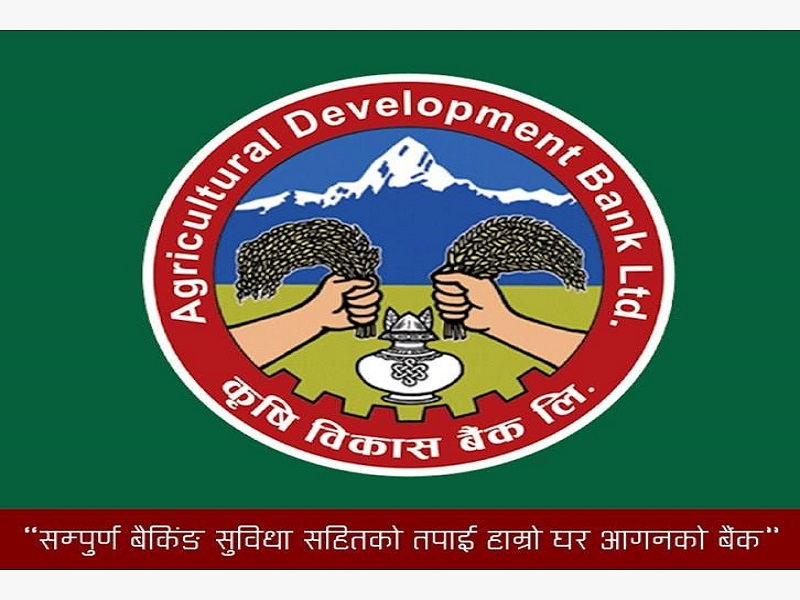Agricultural Development Bank (ADBL) Announces Revised Interest Rates
17th October 2025, Kathmandu
Agricultural Development Bank Limited (ADBL), a foundational pillar of Nepal’s banking and agricultural finance sector, has officially announced its updated structure for deposit and loan interest rates.
ADBL Announces Interest Rates
These new rates are effective from Kartik 01, 2082 (October 18, 2025), providing customers and stakeholders with clear guidance for the upcoming financial quarter. This publication reflects the bank’s commitment to aligning with the country’s current monetary policy and fostering sustainable economic growth, particularly through accessible credit for priority sectors.The rates published by ADBL are comprehensive, covering everything from general savings and specialized fixed deposits to critical lending products like home loans, agro-production credit, and government-subsidized provincial schemes. The overall tone of the new structure points toward a strategy of providing stable, albeit competitive, returns for depositors, while simultaneously making credit more accessible for borrowers by maintaining lower base rates. Understanding these updated rates is crucial for both existing and prospective customers looking to manage their finances effectively in the current market environment.
Stability and Growth: Decoding ADBL’s Deposit Rates
ADBL’s deposit rates for the Kartik quarter have been carefully structured to reward various depositor segments while ensuring the bank maintains adequate liquidity for its core lending activities. The bank has set the standard General Savings rate at 2.75% per annum, a rate that provides stability in a low-interest-rate regime.However, ADBL strategically utilizes higher interest rates to incentivize specialized savings and attract funds for targeted development. Accounts designed for key demographics receive preferential rates. For instance, the Kirshak Bachat (Farmer’s Savings) account, directly supporting the bank’s agricultural mandate, offers a higher return of $3.90\%$. Similarly, accounts focusing on social welfare and inclusion, such as the Bal Surakchya Bachat Khata and Chetanshil Nari Bachat, are set at 3.67%. Furthermore, high-value individual and shareholder accounts, categorized under the Shareholder, Sambriddhi, and Ama Bachat schemes, enjoy the highest standard savings interest rates, ranging from 4.12% to 4.36%
.A notable highlight in this update is the continued competitive focus on attracting foreign currency. Remittance Savings and NRN Fixed Deposits (FDs) are being offered an attractive rate of 5.36%. This effort is significantly amplified by a special note that Remittance Fixed Deposits will earn an additional 1% annual interest, showcasing a robust incentive designed to channel remittances into the formal banking system, thereby boosting the nation’s foreign exchange reserves. For institutional needs, Call Deposits across major currencies (LCY, USD, EUR, GBP) are uniformly set at 1.37%. Special agreements will govern rates for the Endowment Fund (Akchayakosh) and long-term Fixed Deposits with maturity periods exceeding five years, allowing for mutual determination based on specific investment size and duration.
The New Lending Landscape: Analyzing ADBL’s Floating Loan Rates
The most dynamic segment of ADBL’s new rate announcement lies in its loan portfolio, which largely operates on a floating rate mechanism. This mechanism ensures rates remain sensitive to the evolving market conditions and the bank’s own internal cost of funds. As per the bank’s policy, floating interest rates are adjusted based on the average Base Rate of the previous three months, plus a specified premium or spread.
Based on recent financial disclosures, the Base Rate of ADBL has been experiencing a noticeable downward trend, with the quarterly average recently hovering around the 5.5% mark. This crucial decline in the underlying Base Rate has a direct, positive impact on borrowers, as the total interest rate payable is the sum of this Base Rate and the bank’s specified premium. A lower base rate translates directly to more affordable monthly payments for customers holding floating rate loans.
For instance, the bank’s flagship Home Loan is listed with an interest rate range of 5% to 11.65% depending on the tenure. The lowest rate of 5% is highly significant, as it indicates that the minimum interest rate being offered is very close to the bank’s actual Base Rate, offering highly competitive pricing for certain shorter-term or lower-risk loans. Similarly, the consumer lending segment, which includes Land Purchase, Education, Hire Purchase, Auto, and Salary Account Loans, has its total interest rate capped at 10.65%, based on a premium (spread) that can go as low as 2% above the base rate. This ensures a transparent and market-responsive cost of borrowing for personal and consumer financing needs.
ADBL’s Core Mandate: Accessible Credit for Agriculture and Development
In line with its founding mission to uplift the agricultural sector, ADBL has maintained a focused structure for its priority sector lending. Loans geared toward Agro-Production, Livestock, and Fish Farming are set at a maximum of 11.65%, which corresponds to an application of up to 3% premium over the Base Rate. This cap ensures that the cost of capital for farmers and agri-entrepreneurs is managed and remains accessible, even as the bank covers its operational expenses.
Beyond agriculture, the bank plays a vital role in national development. Loans for large-scale Hydropower, Alternative Energy, Business, and Tourism Service Loans carry a premium of up to 3% over the Base Rate. This is designed to support high-impact projects that drive economic infrastructure and job creation.
A cornerstone of ADBL’s public service role is the administration of government schemes. The Provincial Subsidized Loans are offered at highly concessionary rates, ranging from 1% to 5% based on the specific province and the type of loan being offered. This low-interest financing is essential for implementing regional development agendas and promoting small-scale entrepreneurship across the country. Additionally, loans under the VITA (Value Chains for Inclusive Transformation of Agriculture) program are managed according to the bank’s internal policy and the terms of agreement with development partners, underscoring specialized credit arrangements for comprehensive agricultural value chain enhancement.
This comprehensive update from Agricultural Development Bank Limited ensures clear communication regarding the cost of credit and the returns on savings. The new structure, effective Kartik 01, 2082, clearly emphasizes stability for depositors and affordability for borrowers, firmly positioning ADBL to support the country’s economic goals, particularly in its vital agricultural and infrastructure sectors.
For More: ADBL Announces Interest Rates








